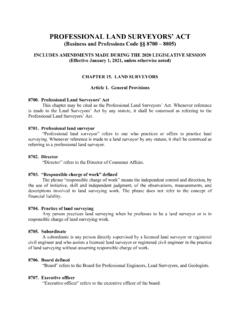Transcription of Wafer-Level Chip Scale Package (WLCSP) - Broadcom Inc.
1 APPLICATION NOTEWLCSPPACKAGING-AN300-R16215 Alton Parkway Box 57013 Irvine, CA 92619-7013 Phone: 949-450-8700 Fax: 949-450-871012/31/03 Wafer-Level Chip Scale Package (WLCSP)OVERVIEW AND ASSEMBLY GUIDELINESB roadcom Box 5701316215 Alton ParkwayIrvine, CA 92619-7013 2003 by Broadcom CorporationAll rights reservedPrinted in the and the pulse logo are registered trademarks of Broadcom Corporation and/or its subsidiaries in the UnitedStates and certain other countries. All other trademarks mentioned are the property of their respective HISTORYR evision DateChange DescriptionPACKAGING-AN300-R12/31/03 Initial releaseApplication Note WLCSP12/31/03 Broadcom CorporationDocumentPACKAGING-AN300-RPage iiiTABLE OF 1 WLCSP 1 WLCSP Process process.
2 2 Testing .. 3 Back-End Process .. 3 Inspection Processes .. 3 Outgoing Bump Specifications .. 3 WLCSP Pb-Free 4 WLCSP Form 4 WLCSP Layout Design 5 Laminate Design Guidelines .. 5 Ceramic Design Guidelines .. 11 WLCSP Substrate Pad Surface Finish 12 Laminate Substrates with NSMD pads .. 12 Laminate Substrates with SMD pads and SOP .. 12 Ceramic Substrates .. 13 WLCSP Substrate Quality 13 WLCSP Assembly Process 13 Handling .. 13 Moisture Sensitivity .. 14 WLCSP Assembly 14 Material Evaluation .. 20 WLCSP 22 WLCSP 22 WLCSPA pplication Note12/31/03 Broadcom CorporationPage ivDocumentPACKAGING-AN300-RLIST OF FIGURESF igure 1: Top and Bottom View of 1 Figure 2: Schematic Cross Section of WLCSP Technology (not to Scale ).
3 2 Figure 3: WLCSP Dimensions .. 4 Figure 4: Recommended Laminate Pad Geometry (NSMD).. 5 Figure 5: Laminate Pad Geometry for SMD Pad With 6 Figure 6: Blind Via-in-Pad (Acceptable) .. 7 Figure 7: Mechanical Via-in-Pad (Not recommended) .. 7 Figure 8: Soldermask Web Between Adjacent Pads .. 8 Figure 9: Scalloped Soldermask Between Adjacent Pads .. 8 Figure 10: Recommended Pad/Trace Layout (NSMD pad shown).. 9 Figure 11: Soldermask Opening Over Ground Plane (Not recommended) .. 9 Figure 12: Multiple Traces Connecting Ground Pad to Plane (not recommended) [Soldermask not shown] .. 10 Figure 13: Recommended Connection of Ground Pads to Via (or plane).
4 10 Figure 14: Recommended Ceramic Pad Geometry .. 11 Figure 15: Cross Section of WLCSP Solder Joint Showing Good Joint Shape and Pad 15 Figure 16: Drum Fluxer With Doctor Blade .. 16 Figure 17: Flux Plate .. 16 Figure 18: Typical WLCSP Solder Joint Cross Section Showing Standoff 18 Figure 19: Recommended Underfill Fillet Height .. 19 Application Note WLCSP12/31/03 Broadcom CorporationDocumentPACKAGING-AN300-RPage vLIST OF TABLEST able 1: Outgoing Bump Specifications .. 3 Table 2: WLCSP Dimensions .. 4 Table 3: Recommended Laminate Pad Dimensions for NSMD Pad .. 5 Table 4: Recommended Laminate Pad Dimensions for SMD 6 Table 5: Recommended Pad Dimensions for Ceramic Substrate.
5 11 Table 6: Underfill/Flux 20 Table 7: WLCSP Qualification Testing .. 22 WLCSPA pplication Note12/31/03 Broadcom CorporationPage viDocumentPACKAGING-AN300-RApplication Note WLCSP12/31/03 Broadcom CorporationDocumentPACKAGING-AN300-RScop ePage 1 SCOPEThis application note provides an overview of Broadcom 's WLCSP ( Wafer-Level Chip Scale Package ) technology andincludes design and manufacturing guidelines for high yield and high reliability OVERVIEWB roadcom s WLCSP technology offers a high-density, low form-factor Package solution that is ideal for mobile applicationswhich require small Package footprints. The finished Package is the same size as the silicon die.
6 The technology enables ahigh yield implementation into high volume manufacturing environments. The WLCSP technology offers the followingattributes: Tested bare die solution with flipchip bumps Provides small form factor for high degree of system miniaturization Ideal for mobile applications Compatible with conventional module design rules Compatible with conventional and Pb-free flipchip assembly processesFigure 1 shows a representative picture of a WLCSP 1: Top and Bottom View of WLCSPWLCSPA pplication Note12/31/03 Broadcom CorporationPage2 WLCSP Process OverviewDocumentPACKAGING-AN300-RWLCSP PROCESS OVERVIEWAs part of the WLCSP process, the native device is converted into a flipchip device.
7 In a flipchip device, the pins are createdwith solder bumps that are used to solder the chip directly to the customer module or board. To create the new solder bumpterminals, an additional metal layer is applied to the chip to provide connectivity from existing on-chip terminals to new solderbump majority of WLCSP processing is done with the device in wafer form. The general process flow for WLCSP devices is: Front-End Processing - The front-end process is where the additional dielectric and metal layers are applied to the chipwhile in wafer form to create WLCSP functionality. After the metal layers are added, solder bumps are applied to thedevice (still in wafer form).
8 Testing - The testing process includes comprehensive functional and performance testing to ensure operationalintegrity. Back-End Processing -The back-end process is where the dies are background, laser marked, singulated, and packedinto the appropriate carrier (tray or tape/reel). Most back-end processing is performed in wafer not listed above, there are other inspection steps and procedures that ensure that only devices with acceptablequality are prepared for PROCESSThe front-end process consists of the following steps: Application and patterning of dielectric material on wafer surface Deposition and patterning of redistribution metal trace layer above dielectric Application and patterning of additional dielectric material above redistribution Application and patterning of the under bump metallization (UBM) Application of solderFigure 2 shows a representative cross section of a WLCSP device.
9 The figure shows the additional dielectric layers, theredistribution layer (typically referred to as RDL), the UBM, and the solder 2: Schematic Cross Section of WLCSP Technology (not to Scale ) DielectricSiliconChip TerminalPassivationRedistribution MetalUBMS older BumpApplication Note WLCSP12/31/03 Broadcom CorporationDocumentPACKAGING-AN300-RWLCS P Process OverviewPage 3 TESTINGF ollowing bumping, all devices on the wafer are fully tested with the appropriate function test parameters. The testingtypically adds a small probe mark onto the bumps. The probe mark is cosmetic only, does not affect the overall bump shape,and does not affect the assembly of the WLCSP PROCESSThe back-end process involves the preparation of fully tested devices for customer shipment.
10 The general flow for the back-end process is: Wafer backgrinding Backside laser marking of each device (still in wafer form) Singulation/Dicing Packing into appropriate shipping format (waffle pack or tape/reel)INSPECTION PROCESSEST hroughout the manufacturing process, Broadcom employs numerous inspection steps designed to detect any defects onthe device. These following steps are in addition to the standard process level inspection steps: 100% automated visual inspection after bumping 100% automated visual inspection during tape/reel (or waffle pack) processThese inspection steps are designed to detect any defects that could impact the quality of the WLCSP device includingmissing or damaged bumps, surface defects, chipped die, or incorrect or illegible marking, BUMP SPECIFICATIONSWLCSP devices meet the bump specifications listed in Table 1.









